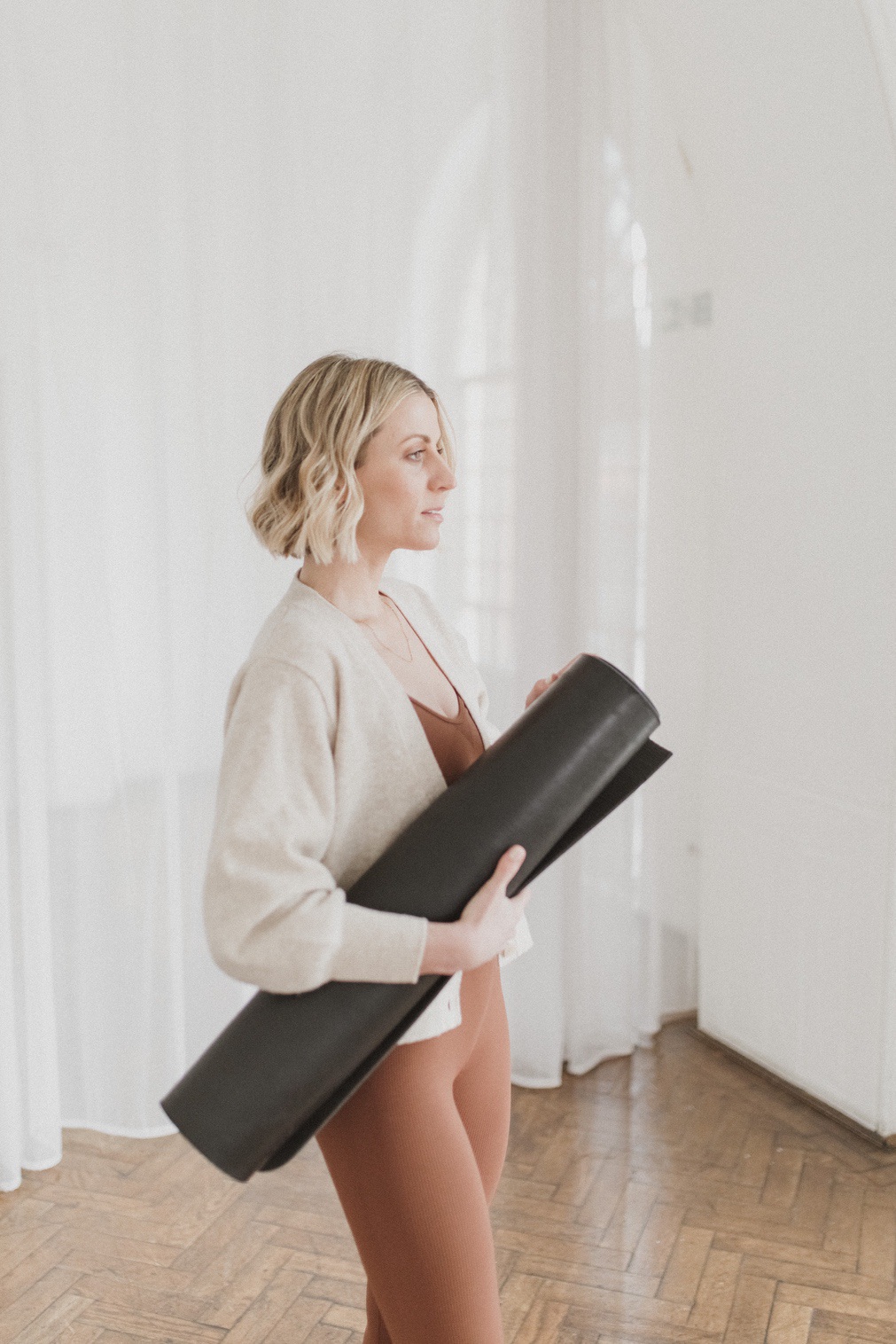
Barre 101
November 1, 2022
Ready for a workout that creates long, sustainable, safe and lasting change? Let us introduce you to Barre.
“Barre workouts are just for dancers, right?”
Oh, if we had a coin every time we heard this question! It’s a common misconception that such a graceful form of exercise requires previous dance experience. Of course, it helps, but the thing we love most about Barre is its accessibility and effectiveness as a form of training.
Barre has emerged from ballet traditions and pilates practices, so you’ll hear us using quite a few French terms throughout the class. Our instructors will offer demonstrations along with their verbal cues, but it’s always helpful to brush up on a bit of lingo.
Allow us to assist.
KEY TERMS
“Plié” – Think of this as a much sexier way of saying ‘knee-bend!’ You’ll find this in almost every section of class as it’s a means of warming up muscles, absorbing shock, and propelling you into other positions. It’ll look similar to a squat, but listen in for specific cues to find your form.
“Relevé” – The action of rising onto the balls of your feet. Great for developing balance and challenging your whole body.
“Tendu” – In this movement, your working leg will extend across the floor until your foot is pointed, and only the tip of the toe is left touching the floor. Sounds much more complicated here than in practice.
“Arabesque” – You know that beautiful, balancing-on-one-leg position you see ballerinas doing in old music boxes? More often than not, you’re looking at an arabesque! Here’s one we prepared earlier:
“Passé” – Also known as a retiré. This describes a movement where the working foot or leg ‘passes by’ the supporting leg. There is usually a moment of contact in this action, but the working leg should never rest on the supporting leg at any point.
“Attitude” – Slightly more technical than a sassy disposition! You’ll be balanced on one leg with the other lifted behind you in this pose. The knee of the lifted leg will be bent at a 90-degree angle and is usually turned out from the hip.
“1st and Second position” – There are five traditional feet positions in Ballet (with corresponding arms), but in Barre, we prefer positions one and two. The first position is achieved by placing your feet in a little ‘V’ shape; the heels touch, and the toes turn outwards.
For the Second position of the feet, you separate your First position by the distance of a small step, maintaining the original turnout. The arms are extended sideways for the upper body, with the elbow slightly bent. It’s much more tiring than it looks to hold this frame, but it’s incredibly effective at building strength and definition through your shoulders, chest and back.
“Curtsy Lunge” – Pretend you’re bowing to the Queen; voila, there you are. Proper alignment is way more important than historical accuracy in Barre! Both knees will bend in this action, but you won’t need to incline your head.
COMMON PHRASES
“Turnout” vs “Parallel” – Here, we’re simply referring to rotating our legs outwards from the hip socket or keeping the feet pointing in the same direction as train tracks. Challenging the body so you’ll work through these movement planes with us is essential.
“Lengthen” – An instructor using this phrase will be asking you to engage and stretch a muscle to feel as long as possible.
Fun fact: we fatigue various muscle groups in Barre so that the muscle fibres form tiny tears (and ultimately build back stronger). By lengthening out a muscle group after using it, we draw fresh blood into the area to start dissolving lactic acid.
POSTURE
Ballerinas are known for having great posture on stage, and this form is something we want to pinch for our workouts. To find good alignment, imagine that a piece of string is knotted between both ears, gently pulling you up to the sky through the crown of your head. You want a sense of length through your neck and openness through the chest, the kind of expansiveness you feel when you throw your arms out wide to greet someone you love. Hips and shoulders should line up squarely in the direction you’re facing, with the ribcage and belly button gently drawing into the spine (rather than flaring or doming outwards). Lastly, think of your tailbone dropping down towards the floor, and your weight spread evenly across all sections of your feet.
TOP TIPS FOR NAILING THE FUNDAMENTALS
1. Give yourself permission to find your own pace
There’s no shame whatsoever in going slower than an instructor’s tempo when you’re starting, learning new coordination or navigating changes in your body. We’ll always offer modifications and advancements and the opportunity to inform us of injuries or pregnancies at the beginning of class.
2. Listen in for cues
Your instructor will guide you on form and correct muscle engagement. The class should feel challenging, muscles WILL quiver and fatigue, but the pain is never the aim. Please don’t push through if something doesn’t feel right!
3. Breathe and have fun
This is tough, but try to avoid holding your breath when things get tough. Breathing, smiling and even laughing through the sweat will help you build strength and cultivate joy; you’re also teaching your brain to enjoy the challenge rather than associating exercise with punishment!
You’ll be following along and speaking our language in no time. Any further questions? Feel free to drop us a comment or an email.
Leave a Reply Cancel reply
Copyright © 2022 CatieMiller.Co Ltd (Company registered in England and Wales with Company Number: 14299972. Trading as Barre Series.
Legal bits
Back to the top
CONTACT
why barre?
Info
FAQS
THE EDIT
Quick links
ONLINE CLASSES
STUDIO CLASSES
Classes
Connect with us on socials
SIgn UP TO THE barre series newsletter
Site made by Rove